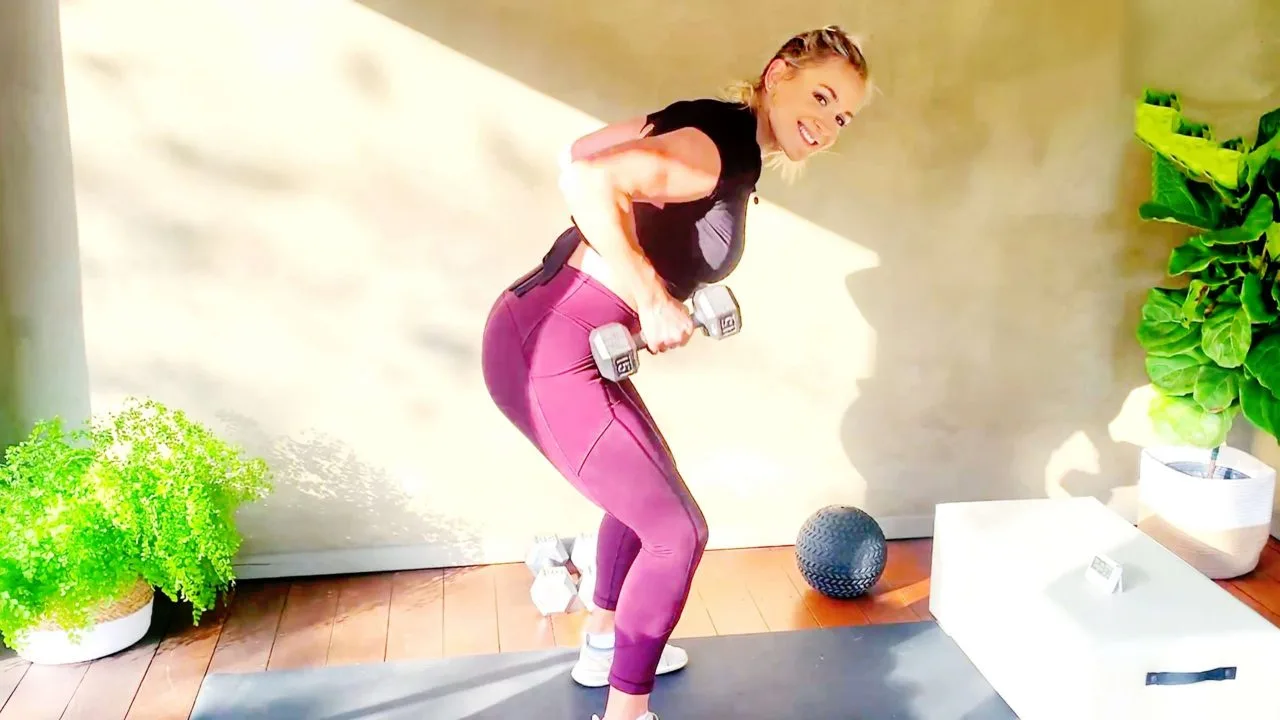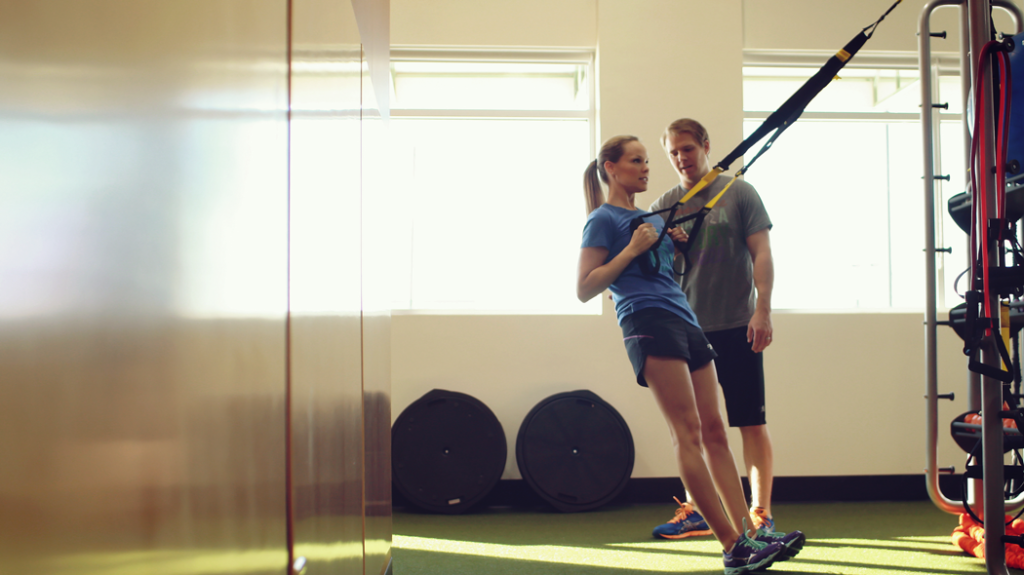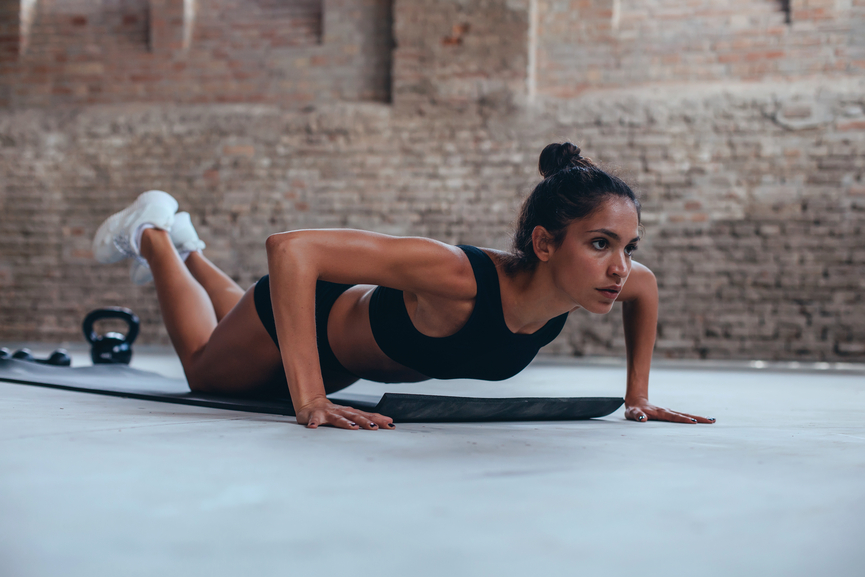We should all be doing push-ups. They’re effective, functional, and may plane be an indicator of heart health. But if you struggle with the full expression of the exercise, you might squint to modified push-ups, like the knee push-up.
Modified push-ups are a suitable substitution for any workout that includes standard push-ups. BODi Trainer Kelsey Heenan recommends trying to start with a few regular push-ups surpassing waffly it up.
“Let’s say you’re doing one push-up where you’re getting lanugo all the way, and you’re getting when up,” she says. “That’s amazing. Do that one, and then go into a modified version like putting your hands at an incline.”
:upscale()/2020/08/13/870/n/1922729/tmp_qBegos_a399c48f642f5fa6_GettyImages-1140193320.jpg) d
d
source: google.com
But when it comes to modified push-ups, some are largest than others.
The Problem With Knee Push-Ups
Though it can be used as a modification, expressly if you’re limited by space and equipment, “the knee push-up unquestionably isn’t a unconfined way to build up to a traditional push-up,” explains Trevor Thieme, CSCS, executive director of fitness and nutrition content at BODi.
Let’s squint at how to perform a knee push-up and see where it falls short as a modified push-up:
Start in a upper plank position but with your knees on the floor instead of your feet.
Keeping your elbows tucked and cadre and glutes engaged, lower your torso until your chest is within a few inches of the floor.
Pause, and then push yourself when up to the starting position.
By keeping your knees on the floor, you’re eliminating the work required of your cadre and legs and deemphasizing the shoulder-elbow-wrist alignment. Therefore, “it doesn’t teach or reinforce the right mechanics,” Thieme says.
So until you can perform traditional push-ups with ease, try these three modified push-ups instead.
3 Optimal Push-Up Modifications
1. Incline push-up
Place your hands slightly wider than shoulder-width untied on a seat or other stable, elevated surface, and seem a upper plank position with your stovepipe extended and your soul straight from throne to heels.
Keeping your when unappetizing and cadre engaged, lower your chest to within a few inches of the elevated surface.
Pause, and then push yourself when up to the starting position.
2. Reduced-range-of-motion push-up
Start in a upper plank position with your hands on the floor.
Keeping your elbows tucked in toward your soul and your neck in a neutral position, lower your torso as far as possible. Aim for at least 75% of your full range of motion so that your chest remains a bit higher at the marrow of the move than it would be during a archetype push-up.
Pause, and then push yourself when up to the starting position.
“If you can go three-quarters of the way down, try to pause at the marrow of your movement,” Heenan says. “That gives your muscles a little increasingly time under tension, so you’re developing increasingly strength.”
3. Negative push-up
Start in a upper plank position with your hands on the floor.
Keeping your elbows tucked and cadre and glutes engaged, slowly lower yourself to the floor for five to 10 seconds.
Return to the starting position and repeat for reps.
Benefits of Modified Push-Ups
Reducing your range of motion or doing push-ups on an incline has an unfair reputation of “cheating” or “copping out.” But here’s why modified push-ups are useful.
Push-up modifications moreover offer many of the same benefits as the standard push-up, including the worthiness to strengthen the chest and stovepipe while challenging the muscles of the core, making them an at-home workout staple that can be performed anywhere — no equipment required.
The post Don’t Do Knee Push-Ups — Try These Modifications Instead appeared first on BODi.
Despite the fact that push-ups are an extraordinarily powerful arms work out, they're famously intense AF. Enter push-up adjustments! Since they're a monster doesn't mean you can't (or shouldn't) add them to your gym routine daily schedule. Not in the least push-ups assist with developing fortitude in your chest area and center, doing the move feels pretty boss. The following are three alterations that are as yet astounding for working your chest area muscles, and will assist you with developing the fortitude and scope of movement you really want to squash your most memorable full push-up.
Wall push-ups, slant push-ups, and knee push-ups are an extraordinary spot to begin, makes sense of superstar mentor Lacey Stone. Customary push-ups expect you to take your whole body off the ground utilizing only your chest area, Stone makes sense of. Nonetheless, these push-up varieties practice a similar scope of movement, however wipe out a portion of the weight you really want to move. They'll likewise reinforce your "push-up muscles" (rear arm muscles, biceps, shoulders, chest, back, and abs), and "they put less squeeze on the joints," Stone says.
The wall push-up is the most straightforward adjustment, trailed by the grade push-up, then, at that point, the knee push-up. "The more as often as possible you practice, the faster you'll have the option to propel," says Stone. Attempt them all, and challenge yourself to progress to the following adjustment (and in the long run, full push-ups). Assuming that you have any aggravation or wounds (particularly issues with your shoulders, wrists, elbows, or neck), check in with your PCP first.
Here is Stone's arrangement for working on your push-up abilities:
Complete 3 arrangements of 12 reps of your change of decision, 3 times each week for quite some time
Complete 3 arrangements of 15 reps of that equivalent change, 3 times each week for a long time
Continue on toward a seriously difficult change and rehash this 4-week plan.




.webp)


